- Data Basin |
- Datasets |
- Change in Runoff (2045-2060) Simulated by MAPSS using HadCM3 GCM under A2 scenario (Western USA)
Change in Runoff (2045-2060) Simulated by MAPSS using HadCM3 GCM under A2 scenario (Western USA)
Dec 1, 2011
Uploaded by
Conservation Biology Institute
- Description:
- Ken Ferschweiler (CBI) used climate data from the PRISM group (Chris Daly, Oregon State University) at 4kmx4km spatial grain across the conterminous USA to generate a climatology or baseline. He then created future climate change scenarios using statistical downscaling and created anomalies from the Hadley CM3 General Circulation Model (GCM) run through the A2 emission scenario (SRES - special report on emission scenarios published in 2000).
To run the MAPSS model (Neilson 1995), average monthly temperatures were calculated for the period 2045-2060. This dataset shows the change in runoff simulated by MAPSS compared to the historical period (1968-1999) based on PRISM climate data.
- Data Provided By:
- Ken Ferschweiler, CBI
- Content date:
- not specified
- Citation:
- unpublished as of Dec. 2011.
- Spatial Resolution:
- 4km x 4km
- Contact Organization:
- not specified
- Contact Person(s):
- Use Constraints:
 This work is licensed under a Creative Commons Attribution 3.0 License.
This work is licensed under a Creative Commons Attribution 3.0 License.
- Layer:
- Layer Type:
- Currently Visible Layer:
- All Layer Options:
- Layers in this dataset are based on combinations of the following options. You may choose from these options to select a specific layer on the map page.
- Description:
- Spatial Resolution:
- Credits:
- Citation:
- Purpose:
- Methods:
- References:
- Other Information:
- Time Period:
- Layer Accuracy:
- Attribute Accuracy:
FGDC Standard Metadata XML
Click here to see the full FGDC XML file that was created in Data Basin for this layer.
Original Metadata XML
Click here to see the full XML file that was originally uploaded with this layer.
This dataset is visible to everyone
- Dataset Type:
-
Layer Package
Bookmarked by
1 Group
Included in
1 Public Gallery
About the Uploader
Conservation Biology Institute
The Conservation Biology Institute (CBI) provides scientific expertise to support the conservation and recovery of biological diversity in its natural state through applied research, education, planning, and community service.


 Ken Ferschweiler
Ken Ferschweiler
